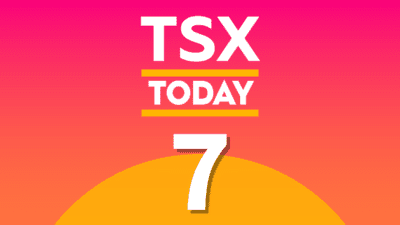Do you want to rule your retirement? If so, it pays to have a Tax-Free Savings Account (TFSA).
TFSAs let you shelter your dividends and capital gains from taxation, leading to higher total returns (at least when pre-tax returns are positive).
For years, RRSPs were the preferred retirement account for Canadians. They were around before TFSAs were, and they offer more “immediate” tax breaks. However, TFSAs have one big advantage that RRSPs don’t: tax-free withdrawals.
Unlike with RRSPs, you can withdraw money from your TFSA without a tax penalty. This means that you get to pocket a higher percentage of your returns with a TFSA. With that in mind, here are three tax tips to help you get the most out of your TFSA.
Max out your TFSA
The first key to getting the most out of your TFSA is to max out the account as soon as possible. The more years you spend in the markets, the greater your total returns will be. If you delay maxing out your TFSA, you may miss out on years of valuable gains.
We can illustrate this by looking at a common investment held by Canadians: iShares S&P/TSX Capped Composite Index Fund (TSX:XIC). This is a broad market index fund that holds the 240 largest Canadian stocks by market cap. In a good year, a fund like this might give you a 20% gain. On average, you can expect maybe 5-10%.
This is not the kind of fund with which you will get rich overnight. For the most part, it is a slow and steady climb. If you hold funds like XIC, you do not want to miss out on valuable years of compounding, because every single one of those years counts.
Don’t contribute too much
A second key to getting the most out of your TFSA is not to contribute too much. Yes, I know, this sounds like it contradicts the previous point, but I’m talking about contributing beyond the limit. Every Canadian gets a certain amount of TFSA space every year. Your total contribution limit depends on the year in which you turned 18. If you were 18 or older in 2009, you get all the space that has accumulated since the program began — $81,500 worth. If you contribute more than that, you will get hit with a 1% monthly tax that will eat in to your after-tax returns.
Avoid day trading
It pays to avoid day trading in your TFSA. The TFSA was designed for long-term investing, not day trading. It’s questionable whether an individual investor can succeed at day trading in the long run. If you DO succeed at it, you run a different risk: having the CRA classify your trading activities as a business.
If you are day trading full time and earning huge profits, the CRA may classify you as a trading business. This negates the tax-free status of your TFSA. And it’s a very real possibility. If you do a search for “day trading tax TFSA” in Google, you’ll find plenty of examples of Canadians who ended up getting taxed in their TFSA because their day trading profits were too high. It’s best to avoid it altogether and stick to bread-and-butter funds like XIC.








